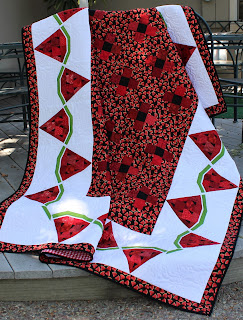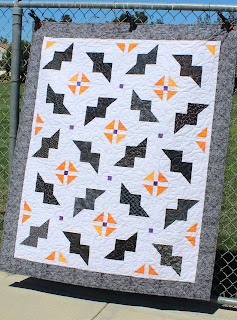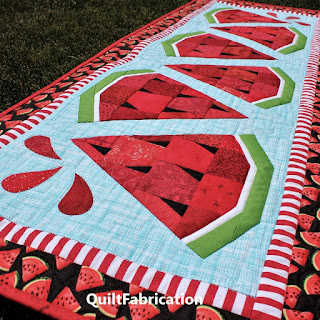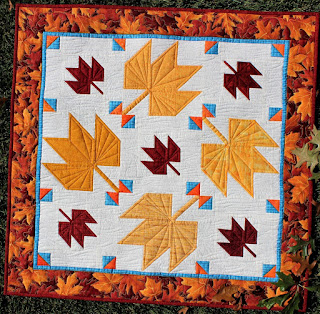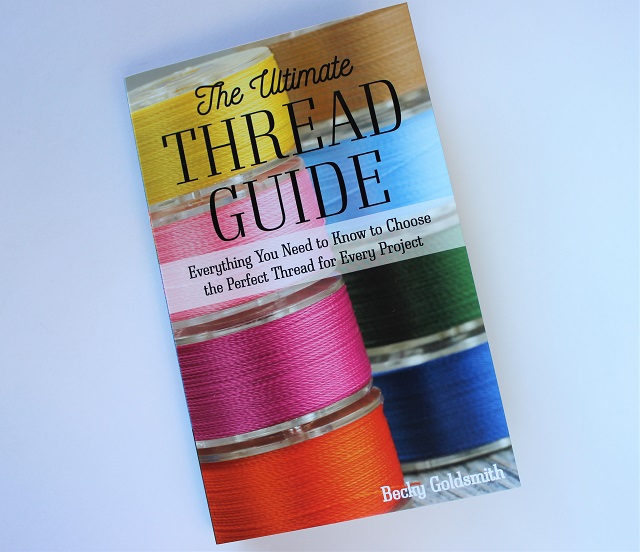Since this was a gift for her musically inclined son, my client requested no social sharing until after Christmas. Now I can share the whole quilt - hope you're not tired of seeing t-shirt quilts!
This quilt measures 73" x 98", which is just a smidge bigger than the recommended 71" x 96" for an extra-long twin bed. Sashing and borders bring the quilt to size, as I had 9 shirts with large logos and 6 shirts with narrow logos to work with.
To start the design process, I laid out the shirts on a sheet marked off with four measuring tapes of the quilt size. The above is the first layout round. As I worked, fusing sheer weight fusible, trimming to size, and adding sashing for a row construction method, I moved a few shirts around for this final layout.
Then I switched to both block and column construction, as the 6 shirts in the lower half can't be put together in a row.
And that's part of the fun of t-shirt quilts - figuring out how to put them together. Just a bit of creativity and the need to remember to add a 1/2" seam allowance are all that's needed. For more information, check out the T-Shirt Quilt Hints and Tips post, which goes over more fine details on t-shirt quilt construction.
With the top complete, I messaged the client about thread choices, either a purple or grey, which are both dribbled onto the quilt to see what they look like.
She kept her first choice, which was the purple. Turned out to be a great choice, especially with the musically related pantograph, Bebop.
Because this quilt is so large, I didn't dare take it outside for a full size photo. Instead, it's back on a sheet on the floor,
looking fabulous, even with sunlight streaming onto it! She was very happy, and looks forward to seeing on her son's bed.
And some fun facts: this quilt used 6.5 yards of sheer weight fusible, 10 yards of fabric, including the back, and 2.5 yards of batting. Yes, quilts take a lot of material. But it is possible to keep that to a minimum, especially if there are a lot of shirts - check out the LinkedIn t-shirt wall hanging.
Have I inspired you to try a t-shirt quilt? Go ahead, jump in!
Happy Quilting!

Thanks for following!












